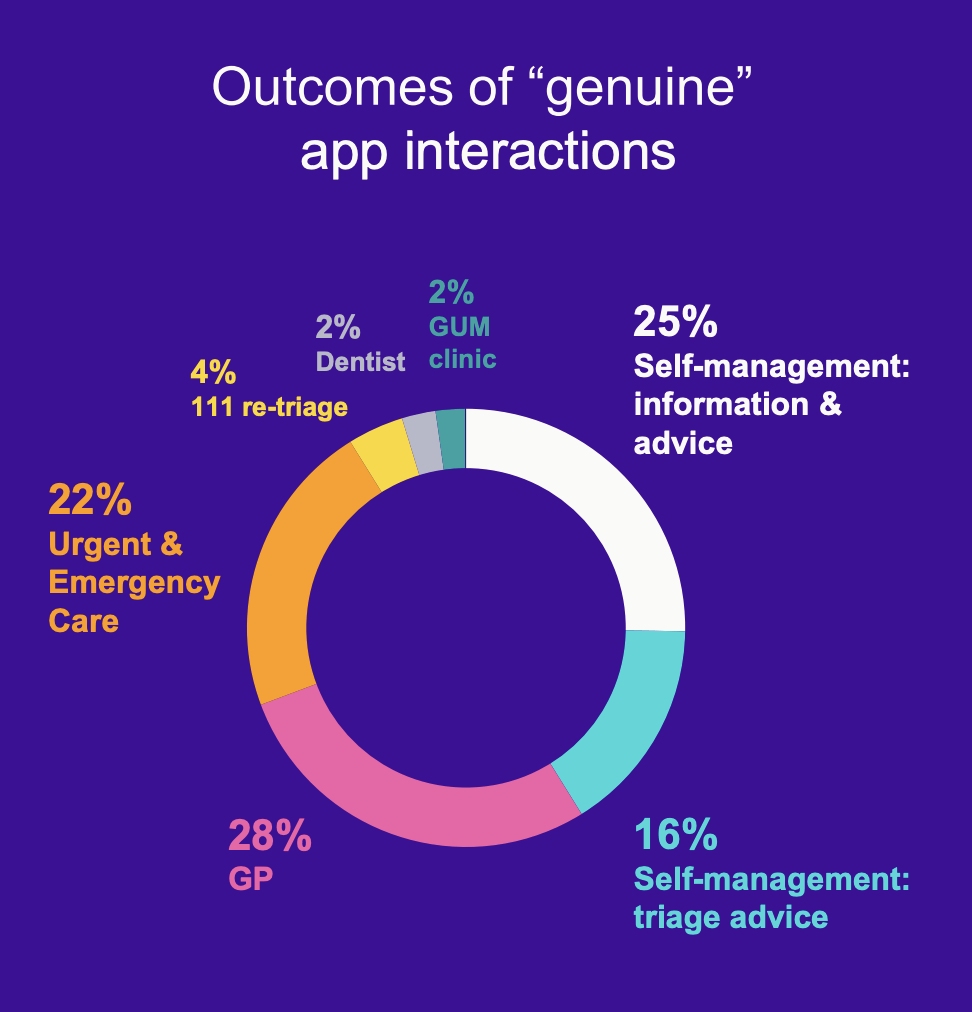Technology is reshaping healthcare and changing how we look at and manage patient care, clinics, and medical facilities. Investment in healthcare technology is growing rapidly and is predicted to reach nearly $660 billion by 2025, while the global health market is valued at under $1 trillion.
UK investment in digital healthcare is lower than the global average, however, with most British health organisations spending 2% annually on it. Compare this average to the U.S. and Europe where healthcare IT spending is closer to 8% annually.
As the market evolves, more of these disruptive technologies will start to be incorporated more into UK healthcare systems. We’ll see technologies like artificial intelligence (AI), cloud computing, and Big Data start to pave the way for more efficient treatment management by providing real-time access to patient histories and identifying health trends earlier. The Internet-of-Medical-Things (IoMT) will make it easier to gather patient data and make healthcare more advanced and accessible.
With so many digital healthcare trends out there, it can be hard to keep track of them all. In this article, we’ve gathered the top healthcare digital transformation trends we think will make the most impact in 2022.
1. Telehealth and Remote Care
Even before the pandemic, telehealth and remote care options were growing, with this segment projected to grow to nearly $400 billion by 2027. These options give healthcare providers the ability to reach more people and make care more accessible to those who otherwise can’t get it, including those living in rural or isolated communities, those unable to travel easily for healthcare, and those without access to specialised healthcare.
For example, North Central London Clinical Commissioning Group (NCL CCG) recently invested in an upgraded Windows Virtual Desktop solution. It helped NCL staff securely connect to the critical NHS applications and Health Care and Social Network (HSCN) services they needed to continue supporting patients and vulnerable people during the height of the COVID-19 pandemic.
2. On-demand Mobile Healthcare
As consumers, we’re used to the anytime, anywhere idea of customer service. This notion has begun to affect the healthcare experience too. A few years ago, 65% of communication between people and healthcare facilities was happening on mobile phones, tablets, or laptops. People go online to research medical conditions, find basic health information, research doctors, hospitals, and medical facilities, and book medical appointments. In fact, 44% of people who research a medical facility online through a mobile device will book an appointment immediately.
Devon Doctors, a leading urgent care provider in Devon owned by a social enterprise organisation, recently upgraded their technology offering to make it easier for mobile healthcare. They’ve rolled out access to the HSCN’s wound management app and now are able to deliver virtual clinics and triage support within nursing homes through tablet computers.
3. Digital Therapeutics
A new trend in healthcare is digital therapeutics: software products used in the treatment of medical conditions. They are similar to customer wellness apps, but they focus on delivering clinical outcomes. Digital therapeutic software undergoes rigorous scientific testing and approval by certified healthcare bodies like the U.K.’s Department of Health and Social Care and the Medicines and Healthcare products Regulatory Agency. They’re typically used as a preventative measure for people at risk of developing more serious illnesses or those who have pre-existing conditions.
Patients engage with digital therapeutic apps that:
- Offer basic guidance on treatments, such as how to administer first aid.
- Work in conjunction with other treatments to address a more complex condition, like diabetes or asthma.
- Use cognitive stimulation to promote behavioural change, such as encouraging the right food choices for those with celiac disease.
- Interface with medical equipment embedded inside patients, such as heart defibrillators or blood glucose trackers.
The global market for digital therapeutics is exploding, doubling investments to over $1 billion in 2020.
4. Wearable Technology and IoMT
IoT is fast becoming a central foundation to making healthcare more advanced and accessible. IoMT is a category of IoT created by a network of Internet-connected devices. These devices can typically be controlled remotely through software applications and connected infrastructure and send patient data through strategic touchpoints.
Wearable technology connected to an IoMT device can help clinicians monitor patients, usually in a non-clinical setting. This technology is growing in use because it’s easy to wear like a watch, belt, or bracelet, already making it the #3 most impactful digital technology in the U.K. today.
5. AR and VR
The augmented reality (AR) and virtual reality (VR) healthcare market will reach nearly $10 billion by 2028. These promising technologies allow healthcare professionals the option to test or try out new ideas and techniques before using them in real life. The technology’s accurate 3D modelling of human organs and tissues gives researchers and doctors a chance to test medicines virtually to predict how a live human would respond. Also known as “virtual patients” or “organs-on-a-chip”, AR and VR technology can reduce live testing on animals and fast-track human clinical trials.
Enhanced reality technology (AR, VR, and mixed reality) is also being used by British surgeons as they collaborate with international colleagues. In 2017, two doctors from around the world used Microsoft’s Hololens to virtually enter a surgical theater at the Royal London Hospital to assist and collaborate on a cancer surgery. The two “visiting” surgeons were able to view patient scans as 3D holograms hovering in the air and could virtually draw on them to indicate actions the live, in-person surgeon could perform.
6. Artificial Intelligence
AI technology in healthcare refers to the use of complex algorithms designed to perform specific tasks, such as search or analyse information, in an automated fashion. It can help doctors, researchers, and scientists review, interpret, and even suggest solutions to complex medical issues. AI is being used in healthcare in everything from virtual assistants that “see” patients to natural language applications that optimise clinical documents storage to robotically-assisted surgical devices.
One study in the U.K. used an AI-powered chatbot app (NHS111 powered by Babylon) and found some surprising results. The chatbot was able to divert nearly half of all patients from their Primary Care service to a self-managed outcome while maintaining nearly the same referral rate (22% versus 21% for live people) to Urgent and Emergency Care.

This AI-powered solution saved the NHS an average of £10 per patient by triaging patients to the most appropriate care needs first.
7. Big Data
Big Data in healthcare refers to all the data created by digital medical technologies for patients. Adding business intelligence power to healthcare like this can drive financial growth and offer more advanced health options to clinicians and patients. Healthcare management teams can use analytics to reduce costs across the organisation, identify areas for savings or investment more easily, and gain better visibility into their finances.
For clinicians, predictive analytics can identify patient deterioration based on a broader scope of health data than humans can process. It could also predict patient utilisation patterns and guide new treatment options for illnesses or indicate what areas of the facility need upgrading or investment. Take the partnership between NHS England and The Health Foundation, for example. They created the Improvement Analytics Unit (IAU) to provide rapid feedback on local health care projects aimed at improving care and efficiency. These healthcare studies typically took years to analyze and derive insights from, often being too late for the public.
The IAU is using automated data analytics to monitor the effects of the programmes in real-time so local services and decision-makers can improve care immediately. For example, in one evaluation, the IAU analysed the impact of enhanced support on hospital use by using newly linked care home and hospital data. It found that care home residents who received enhanced support experienced 23% fewer emergency admissions than those at other homes.
8. Cloud Computing
As cloud computing evolves and security issues are addressed, many healthcare institutions are turning to it for the many benefits it provides. Cloud computing can cut storage costs, offer higher computing power than they usually have available, and eliminate data silos across the organisation. It’s easier to scale cloud services up and down as needed, so that healthcare providers and institutions can adapt their technology usage to peak seasons without wasting time and money.
Plus, health data managed in the cloud can be easily recovered or accessed if there’s downtime at any one location or in a particular system. Cloud providers use advanced data loss tools and strategies to protect their customers’ data, so healthcare providers can reduce their in-house IT workloads.
The global healthcare cloud computing market is forecast to grow by $33.49 billion by 2025, while in Europe, it’ll enjoy a compound annual growth rate of nearly 15% by 2026.
9. Blockchain
Blockchain technology could potentially revolutionise healthcare technology; it could also be its undoing, depending on who you ask. At a basic level, a blockchain is a distributed system or network that generates and stores data records. It maintains a digital ledger of connected blocks of data that represent how the information is shared or accessed on its peer-to-peer network. Data cannot be changed or deleted from the blockchain, and every transaction is tracked chronologically.
Blockchain technology is accurate and secure, two critical things for healthcare data. Though, how it could work in a healthcare setting depends on the blockchain technology implemented, so they should be investigated by those with expertise in blockchain and healthcare.
One company making strides in this area is Chronicled. With their MediLedger Network, they’ve been working on making blockchain a reality for the pharmaceutical industry since 2017. According to BIS Research, global spending on blockchain in healthcare is expected to reach $5.61 billion by 2025 and save the industry up to $150 billion annually.
While the focus of much of the digital transformation in healthcare has been on technology, the other part of the equation is the human factor. The new tech has to strengthen patient relationships with healthcare providers, foster organisational changes, and encourage employee engagement.
The new technology can create more intuitive and personalised care ecosystems for patients while making it easier, more efficient, and effective for providers to use. By combining the fragmented medical information available from social systems, financial resources, home-care and self-care monitoring, and other traditional modalities of care, institutions create a digital foundation on which they can add the new technology. Advanced analytics and AI, for example, can use this optimised info to generate insights for patients and their community of caregivers. Wearable IoMT devices can be combined with digital therapeutics and remote care options to increase accessibility to care for those living in isolated areas or who need higher levels of care and are unable to stay in a facility.
If you would like to discuss your healthcare system’s digital transformation then get in touch with the Redcentric team today to see how we can support you.



